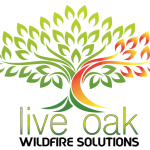
In this video nearly all of the buildings in this apartment complex survive the Paradise Fire (Camp Fire). The buildings are surrounded by perfect defensible space with a clear 5 foot non-combustible zone, 30 feet of grass surrounding the homes and then a perfect 30 foot “Lean, Clean and Green” zone. This complex was surrounded by thousands of destroyed homes and yet most of the buildings….but not all survived. We will never know exactly how ignition on that building started but it could have been lawn furniture or something around the home, or burning embers could have penetrated into the attic. But we see that defensible space saved 90 percent of the buildings in this development.
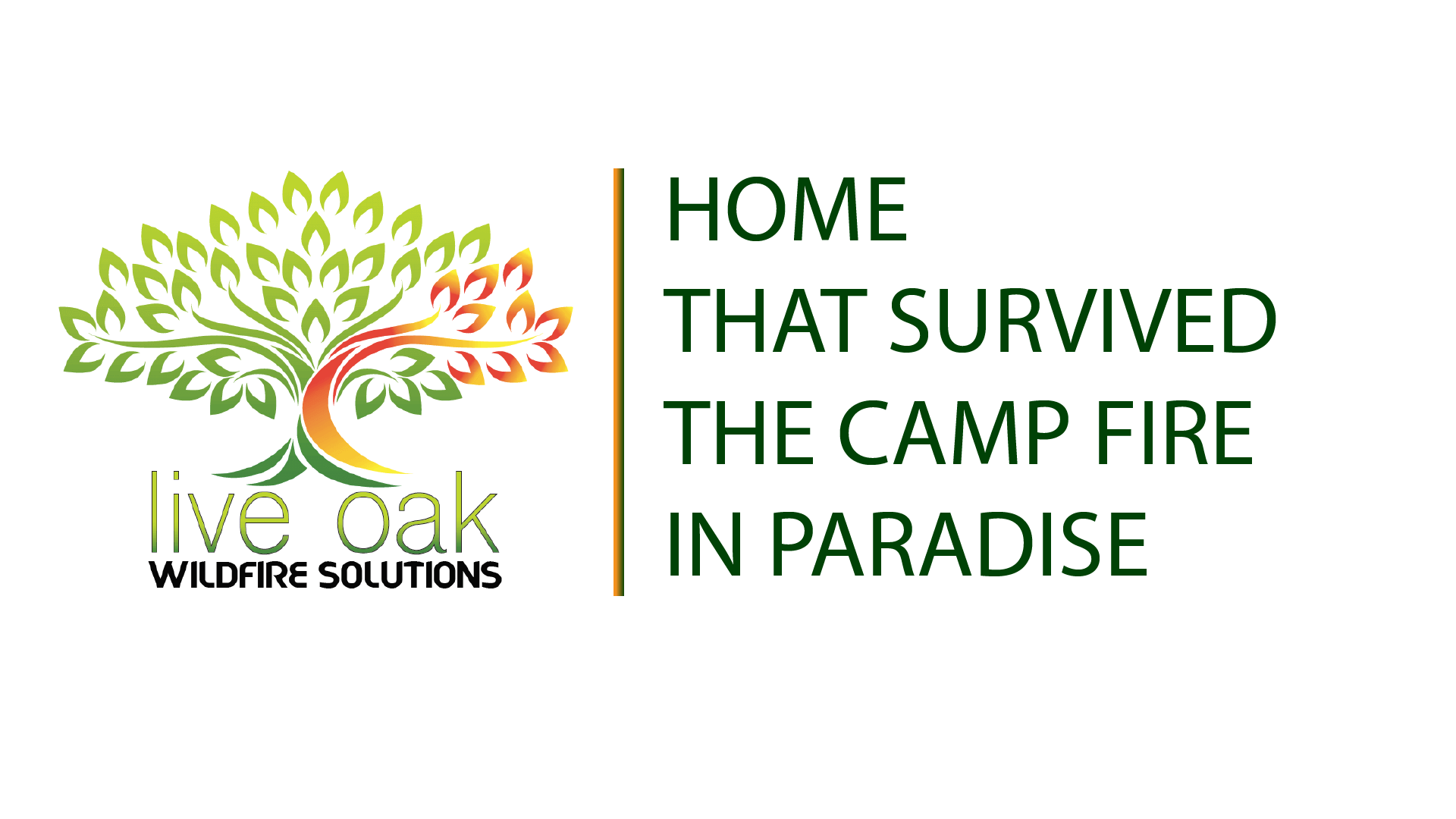
This house was completely surrounded by many totally destroyed homes and probably would not have survived the fire without firefighting forces saving the home. But then firefighters wanted to attempt a save on this home because the defensible space was so complete. Likely this home only needed a small amount of help from firefighters and then they could move on. This house has a five foot wide gravel bed surrounding the house. Thinking about it today, many homeowners use gravel right next to the house so they don’t get irrigation water on their siding. The gravel also prevents water from the roof from splashing mud on the siding. From a defensible space perspective, the gravel around the home creates an easily maintained zone around the house that won’t easily ignite from burning embers.
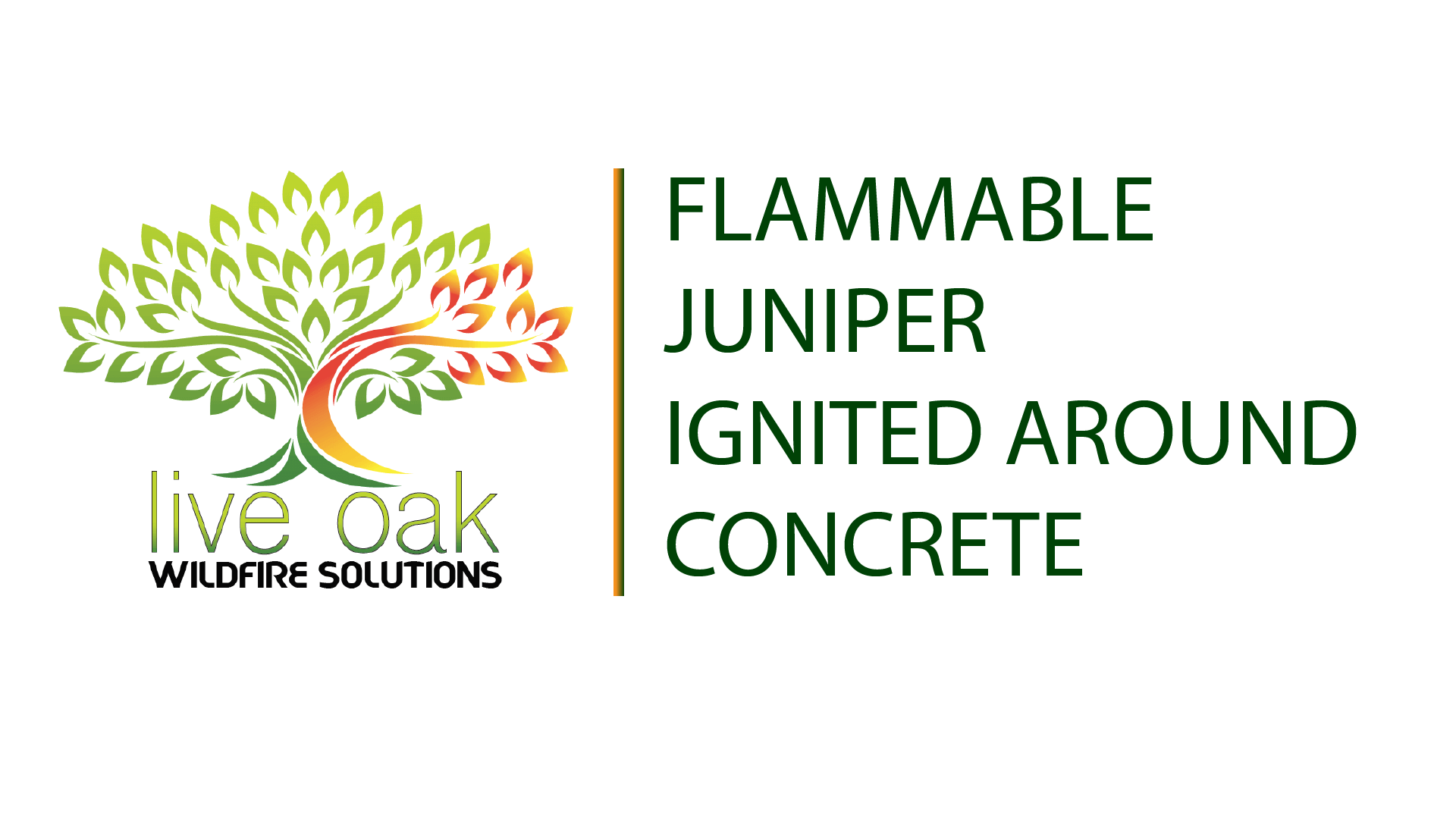
We see juniper that ignited, even though it was surrounded by concrete and in the middle of the Town of Paradise. There is just no safe amount of juniper within 30 feet of a home and really…..juniper should generally be removed from anywhere in a community with fire hazard. Live Oak Wildfire consults with homeowners about creating effective defensible space, complete the tree and brush removal and then help design a yard plan that will include low maintenance low fire hazard plantings. Our goal is to work with homeowners before the fire so their home survives the next inevitable wildfire.
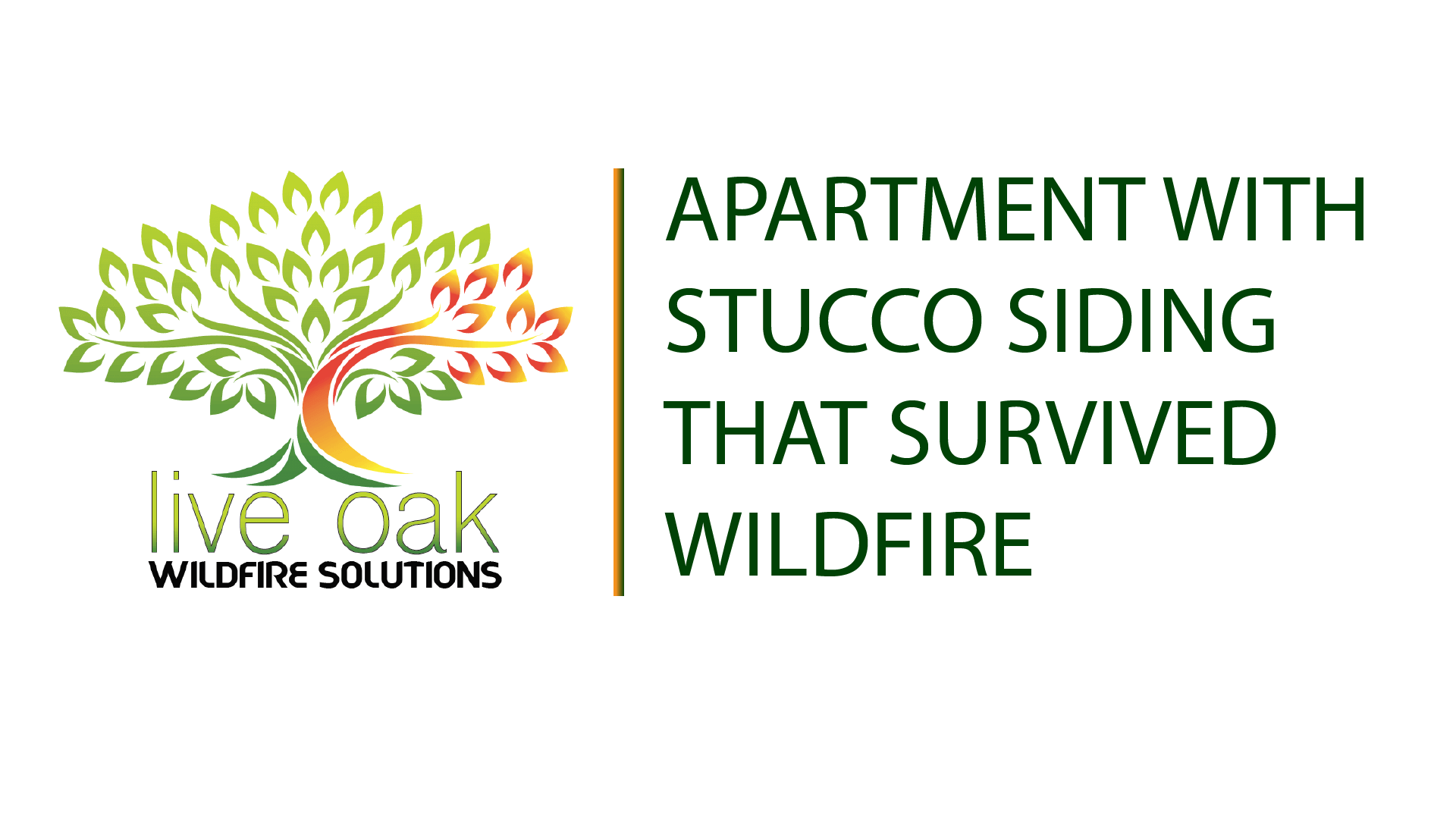
In this video we see how ignition resistant construction worked in concert with defensible space to protect a home from burning even though it was surrounded by many totally destroyed homes. We should note that the building had many large ponderosa pine growing right next to the building. Large ponderosa pine can be very expensive to remove and removing them probably contributes very little to home survival. However, these pines do also shed needles that frequently do contribute to home ignition and the roots can begin to damage driveways or building foundations. Removing them can make it much easier for the homeowner to maintain defensible space.
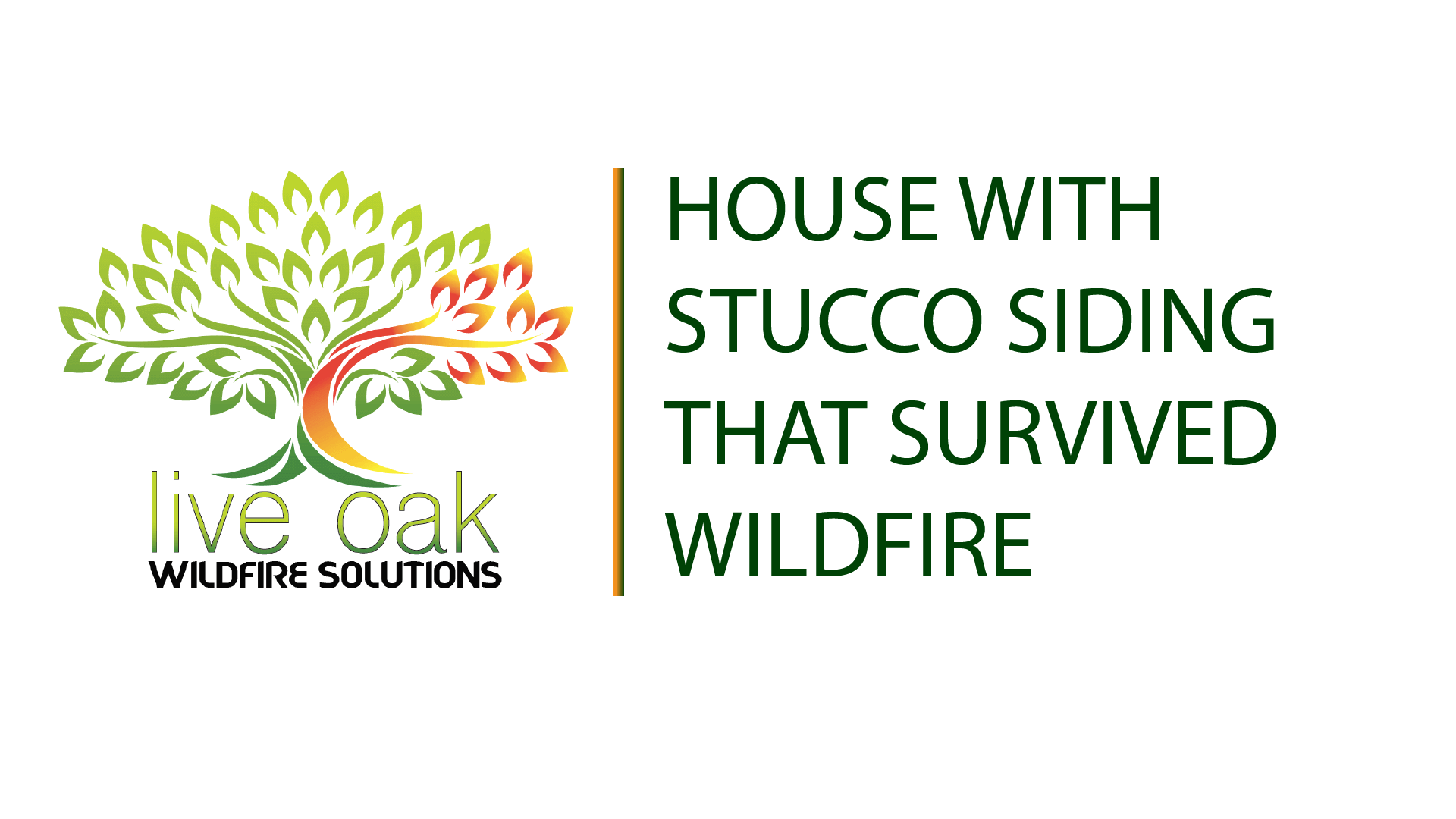
In this video a home survived because of the ignition resistant construction including stucco siding. The garage next to the house did burn, and I would guess burned because of flammable materials next to the garage. It is common for homes to have effective defensible space but then have some boards or other flammable materials next to the garage. It is amazing that the main home could survive the amount of heat that would have been put off by the burning garage.
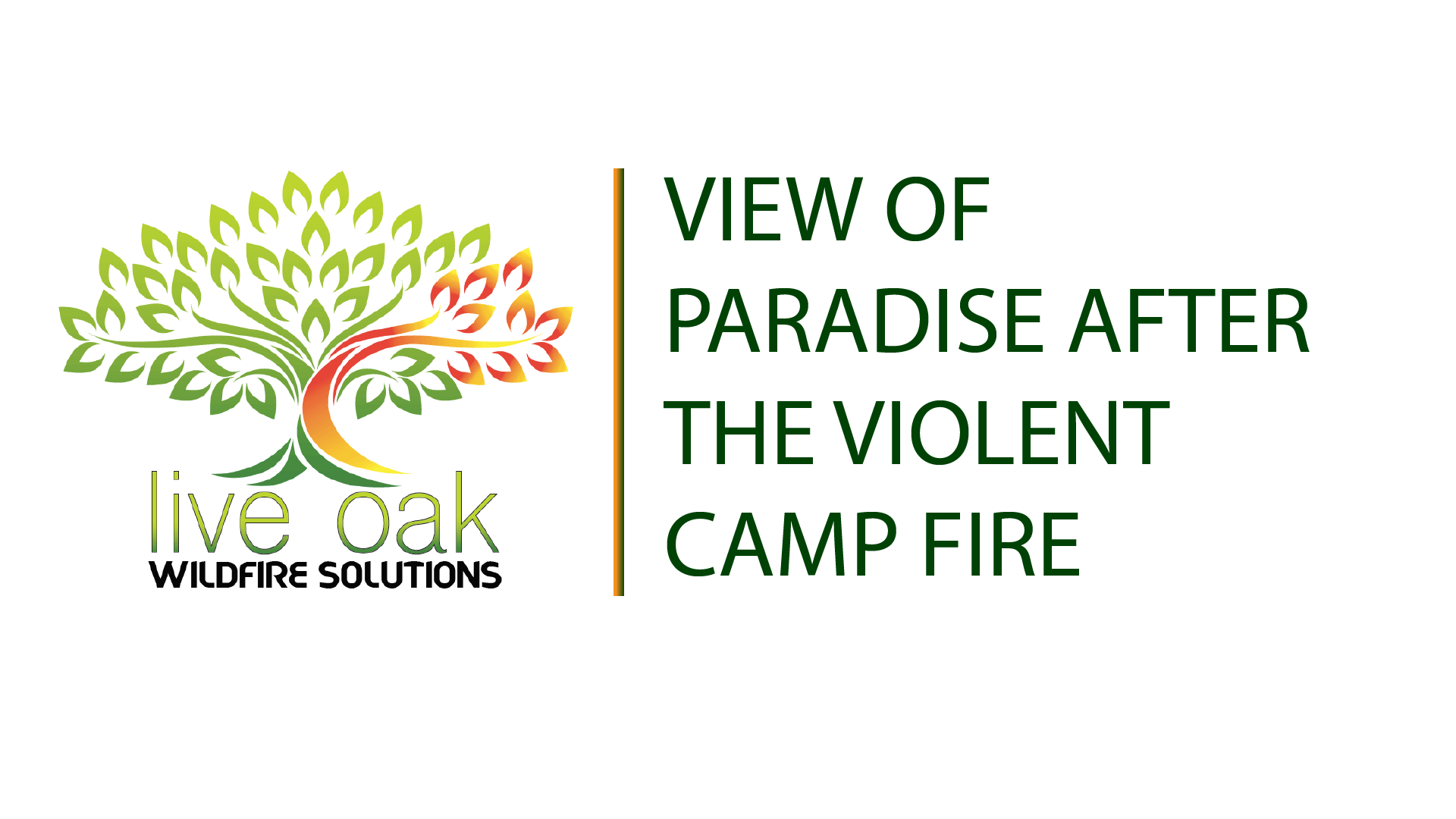
In this video, Live Oak Wildfire documents view of the Town of Paradise after the horrific Camp Fire in 2018. The Camp Fire of 2018, which burned the city of Paradise, is dubbed the most destructive and deadliest wildfire in California’s history. In terms of insurable losses, this fire was the most expensive natural disaster the world experienced in 2018. In this case study, we investigate the damage from the fire.
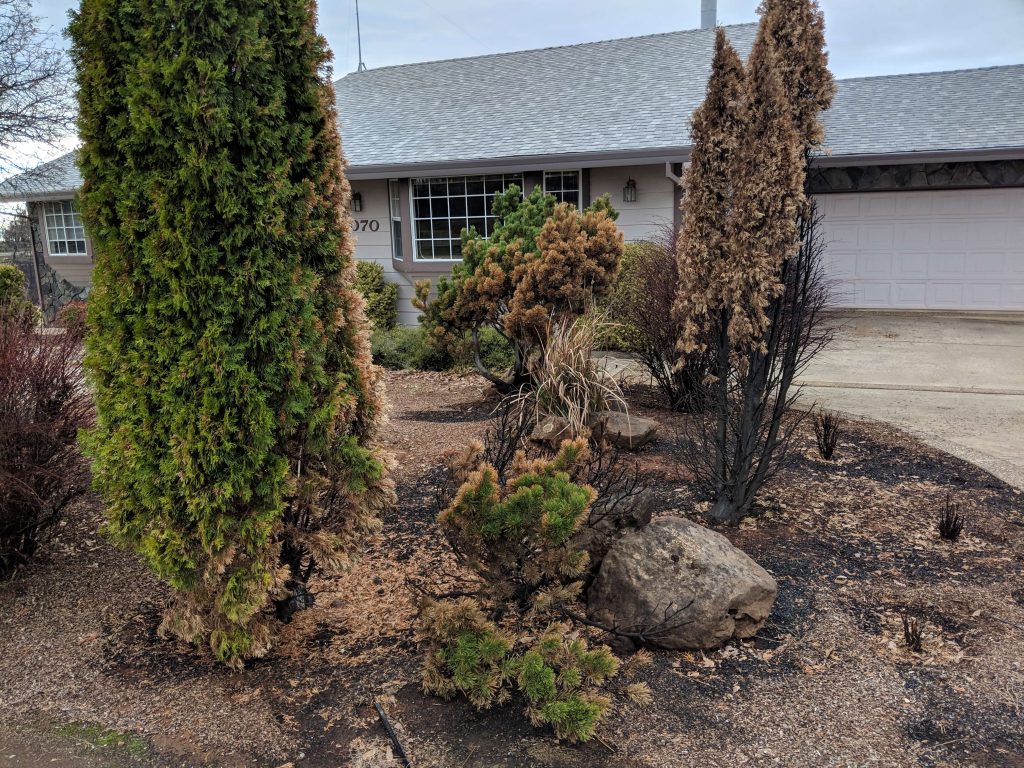
House Saved by Defensible Space
This house was effected by the Camp Fire (Paradise Fire). The home had effective defensible space but it should be noted that the flammable wood chips burned into the flammable landscape. If the same wood chip had been used within 5 feet of the home, then home ignition would have been almost certain. The home had a clear 5-foot noncombustible zone and the flammable landscaping was generally single isolated flammable plants, which while risky; is acceptable within the Lean, Clean, and Green Zone or 30-foot zone. This home would have been getting showered with burning embers for nearly the entire time of the fire.
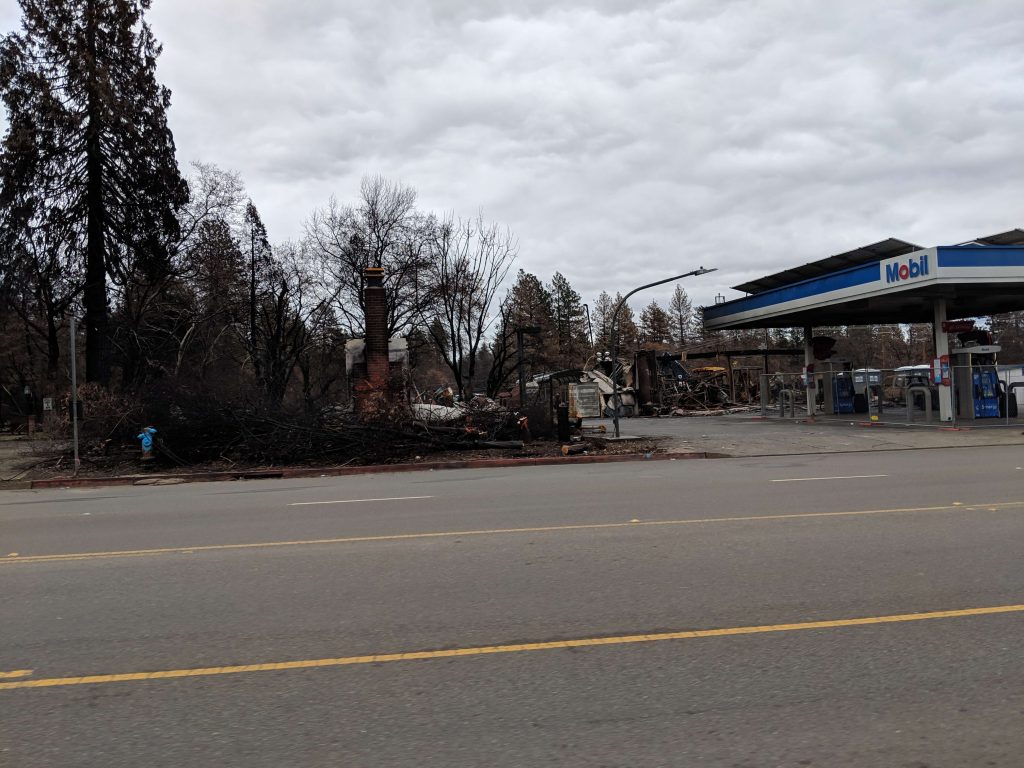
No Defensible Space
In this photo, a home was located next to a gas station. Gas stations are pretty fire resistant buildings, however, as this photo shows, a structure is at huge risk for ignition if the neighboring home is burning.
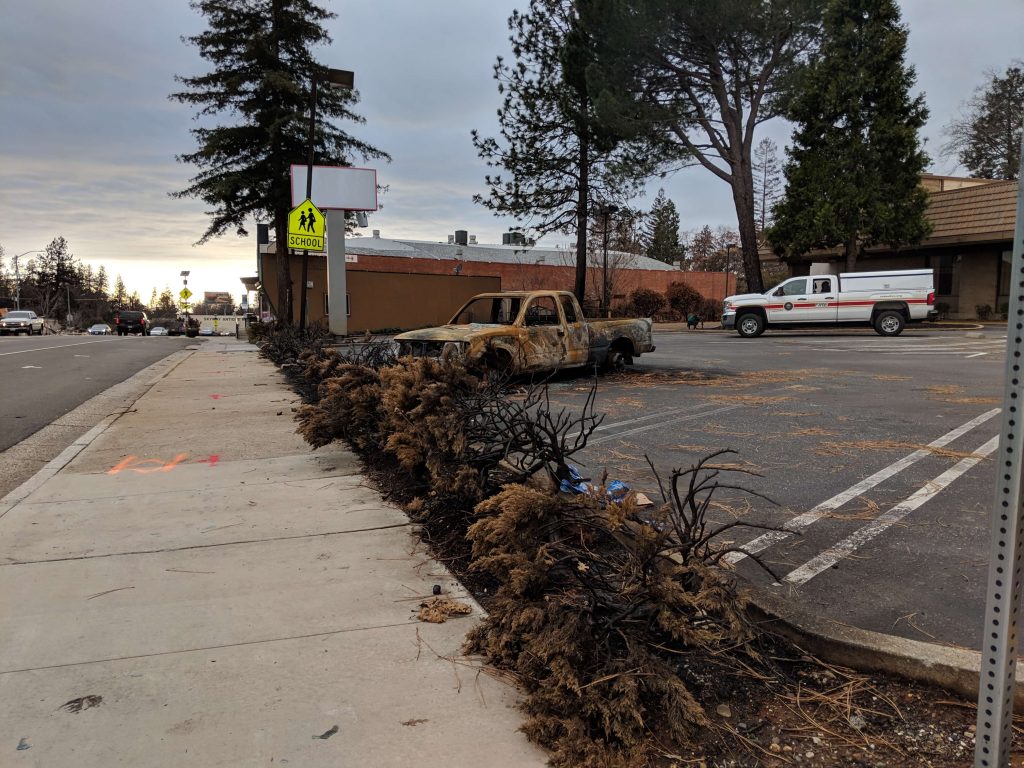
Flammable Juniper
In this photo, we see juniper that ignited even though it was surrounded by concrete and in the middle of the Town of Paradise. There is just no safe amount of juniper within 30 feet of a home and really… juniper should generally be removed from anywhere in a community with fire hazard.
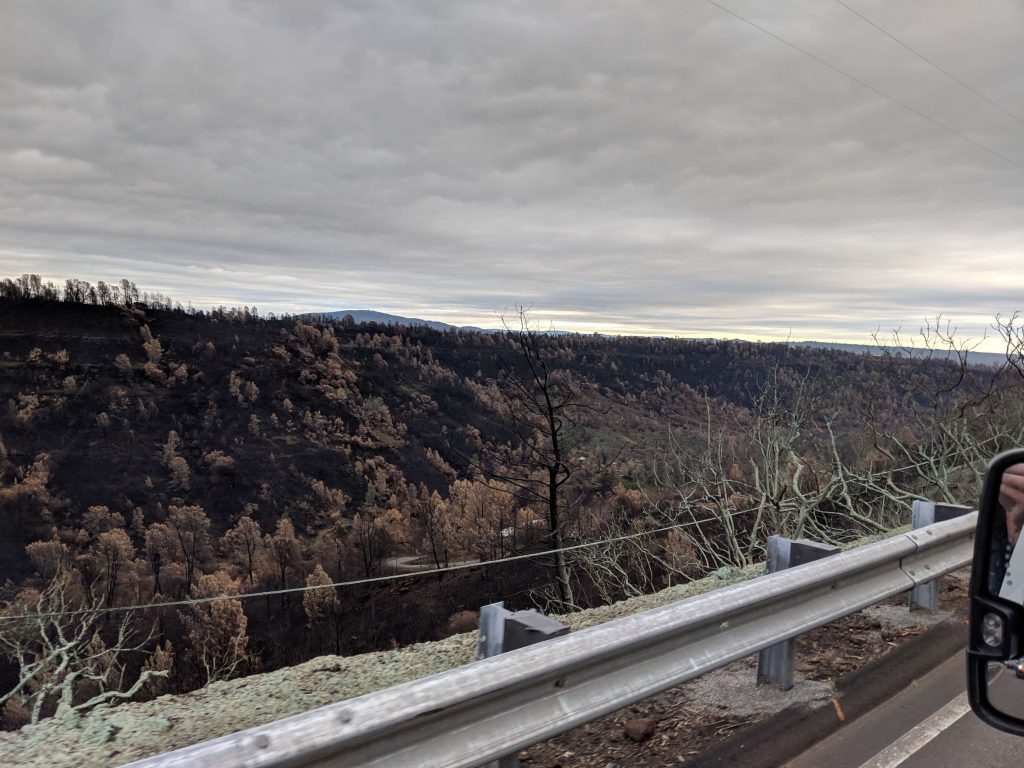
Canyon Winds
On most days, fires can easily be suppressed, even when there is extreme fuel loading, simply because the fire travels slowly without the finds driving fire spread. “Red Flag” warnings are declared by the National Weather spread and high energy release. We can think of this intuitively, we have a harder time using wet leaves to start a fire versus dry leaves. The same is true for major wildland fires. Wet fuel and light wind suppress fire growth and high winds with dry fuel, which will enable fire to spread with great speed. In this picture, we see the canyrons that funneled the wind through the community and increased the wind speeds and thus drove the fire into the homes that burned.
Live Oak Wildfire can help homeowners create effective defensible space plans, certify compliance for homeowners insurance purposes and can complete any of the work that needs to be done around the home. Our goal is to help you prepare for wildland fires so your house can survive the next inevitable wildfire.
Useful Links
Contact Us Today!
- 1-775-220-7675
- jpickettRPF@gmail.com

